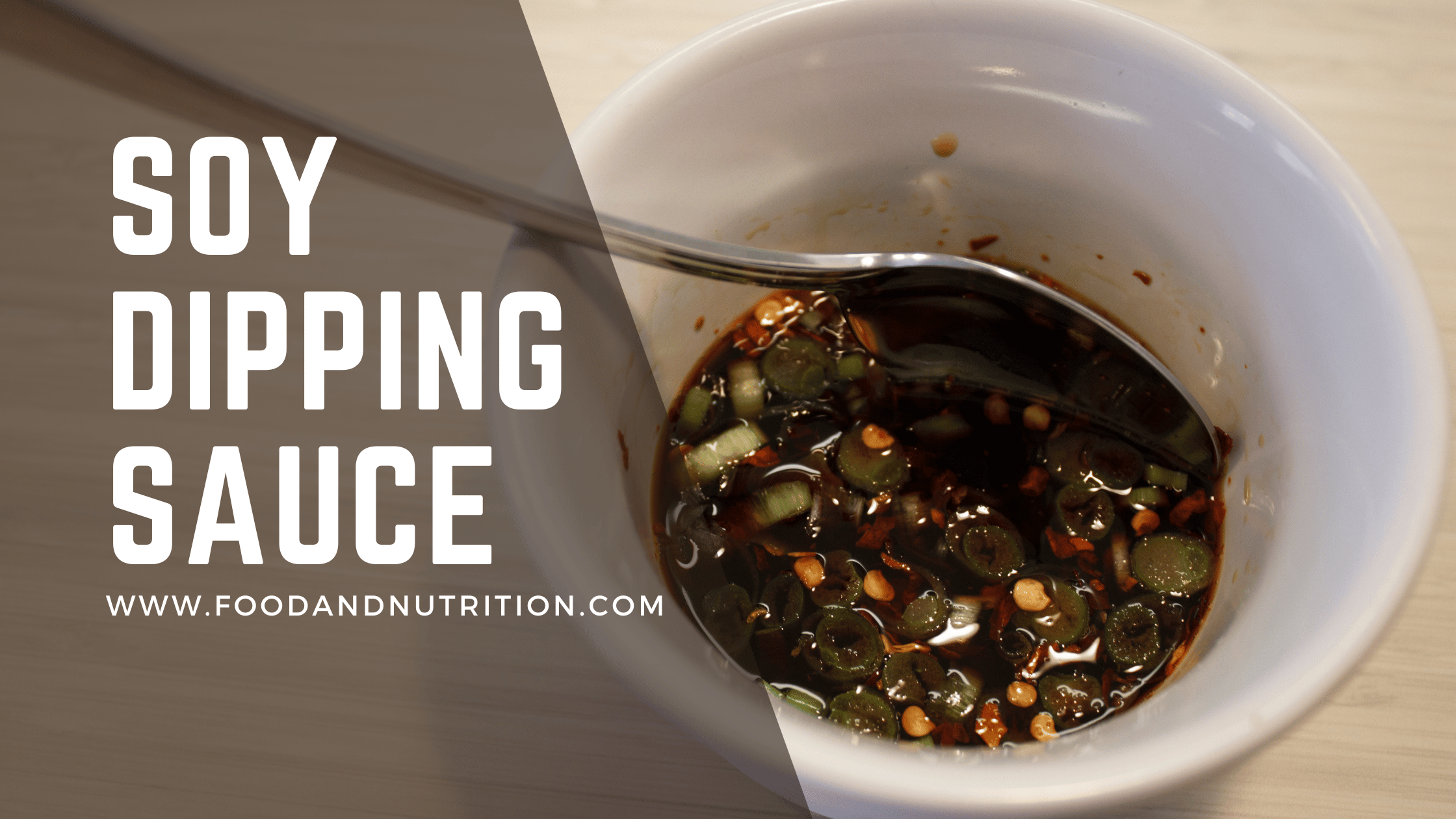Soy Dipping Sauce: Unlocking the Secrets of Asia’s Beloved Condiment

In the realm of Asian cuisine, there is a condiment that holds an irresistible allure—Soy Dipping Sauce. This delectable concoction of flavors has stood the test of time, captivating taste buds across various cultures. Join us on a journey to explore the history, popularity, common ingredients, nutritional value, and endless serving ideas of this versatile and beloved sauce.
Unveiling the History
The origins of soy sauce, the foundational component of soy dipping sauce, can be traced back to ancient China. The art of fermenting soybeans, wheat, and salt gave birth to this umami-packed liquid gold. As the centuries passed, soy sauce traveled across borders, permeating the cuisines of Japan, Korea, and other Asian nations. Its rich flavor and unique profile made it an indispensable element in countless recipes.
Why is Soy Dipping Sauce Popular?
Soy dipping sauce owes its popularity to the perfect harmony it strikes between salty, sweet, and tangy flavors. This balance is achieved by combining soy sauce, rice vinegar, and honey. The resulting blend tantalizes taste buds, elevating dishes to new heights. Its versatility is another factor in its widespread acclaim, as it complements a wide array of Asian-inspired delicacies.
Common Ingredients
- Soy Sauce: The backbone of soy dipping sauce, soy sauce lends a savory, umami taste. Opt for low-sodium or tamari versions for a healthier option.
- Rice Vinegar: This mild, slightly sweet vinegar provides a delicate tang that enhances the overall flavor profile.
- Honey: Acting as a natural sweetener, honey brings a touch of sweetness that balances the sauce’s savory and tangy notes.
- Garlic: Mincing a clove of garlic adds a hint of pungency and depth to the sauce.
- Ginger: Freshly grated ginger introduces a zingy, aromatic element that complements the other flavors.
- Green Onion: Chopped green onion imparts a fresh, onion-like taste, adding a burst of freshness to the sauce.
- Serrano Pepper: Thinly sliced rings of Serrano pepper provide a subtle heat that can be adjusted to personal preference.
- Sesame Oil (optional): A few drops of sesame oil contribute a nutty undertone, intensifying the overall flavor experience.
Here’s a recipe for a simple soy dipping sauce
Soy Dipping Sauce
Ingredients
- 1/4 cup soy sauce
- 2 tbsp rice vinegar
- 1 tbsp honey
- 1 clove garlic minced
- 1 tsp grated fresh ginger
- 1 green onion finely chopped
- 1 Serrano pepper — thinly sliced rings
- 1/2 tsp sesame oil optional
Instructions
- In a small bowl whisk together the soy sauce, rice vinegar, and honey until the honey is fully dissolved.
- Stir in the minced garlic grated ginger, chopped green onion and Serrano pepper.
- If desired add the sesame oil for extra flavor.
- Serve as a dipping sauce for sushi dumplings, or other Asian-inspired dishes.
Notes
- For example, you can add more honey if you prefer a sweeter sauce, or more garlic if you like a stronger garlic flavor.
- Adjust the quantities of the ingredients to suit your taste preferences.
- For a sweeter sauce, add more honey; for a stronger garlic flavor, increase the amount of minced garlic.
- This soy dipping sauce can also be used as a marinade for meats and tofu.
Nutritional Value
Soy dipping sauce offers more than just a delightful taste. Soy sauce itself contains essential amino acids, providing a moderate amount of protein. It is also a source of minerals like iron, manganese, and potassium. However, keep in mind that soy sauce can be high in sodium, so choose low-sodium options if watching your salt intake. The other ingredients, such as garlic, ginger, and green onion, offer additional health benefits, including anti-inflammatory and antioxidant properties.
Serving Ideas
- Sushi Delight: Pair soy dipping sauce with freshly rolled sushi or sashimi for a burst of flavor. Mix it with wasabi to create a spicy and tangy dip that elevates each bite.
- Dim Sum Extravaganza: Serve soy dipping sauce alongside an assortment of steamed or fried dumplings, buns, and other dim sum delights. The sauce’s umami notes perfectly complement the savory fillings.
- Marinating Magic: Use soy dipping sauce as a marinade for meats and tofu. Allow the flavors to infuse, resulting in succulent and flavorful dishes.
- Grilled Goodness: Brush soy dipping sauce onto grilled meats, such as bulgogi or barbecue, for an irresistible glaze. The sauce adds depth, while its acidity helps tenderize the meat
- Veggie Delights: Drizzle soy dipping sauce over steamed or stir-fried vegetables to enhance their natural flavors. Tofu and tempeh dishes also benefit from a generous splash of this sauce.
Conclusion
Soy dipping sauce, with its rich history, impeccable flavor profile, and countless serving ideas, is an essential addition to your culinary repertoire. By using this sauce, you can transform simple dishes into culinary masterpieces, impressing friends and family with your culinary skills. Moreover, the nutritional benefits of its ingredients, when used in moderation, add an extra layer of appeal to this beloved condiment.
Embrace the allure of soy dipping sauce, and let your taste buds embark on a tantalizing journey through the depths of Asian flavors. From the delicate balance of salty and sweet to the satisfying umami explosion, this sauce will elevate your dining experiences to new heights.
- Embracing Summer: The Ultimate Watermelon Feta Salad with Tomatoes & Olives
- Rediscovering Lebanese Salad: A Refreshing Delight with a Rich Heritage
- Eating Your Way to Healthy Blood Pressure: A Guide to Lowering Hypertension
- Perfect Roasted Leg of Lamb: A Timeless Delight for Your Table
- Romesco Sauce: A Flavorful Spanish Delight That Elevates Every Dish
- Master Cooking with Salt: A Guide to Types & Uses – Elevate Meals
